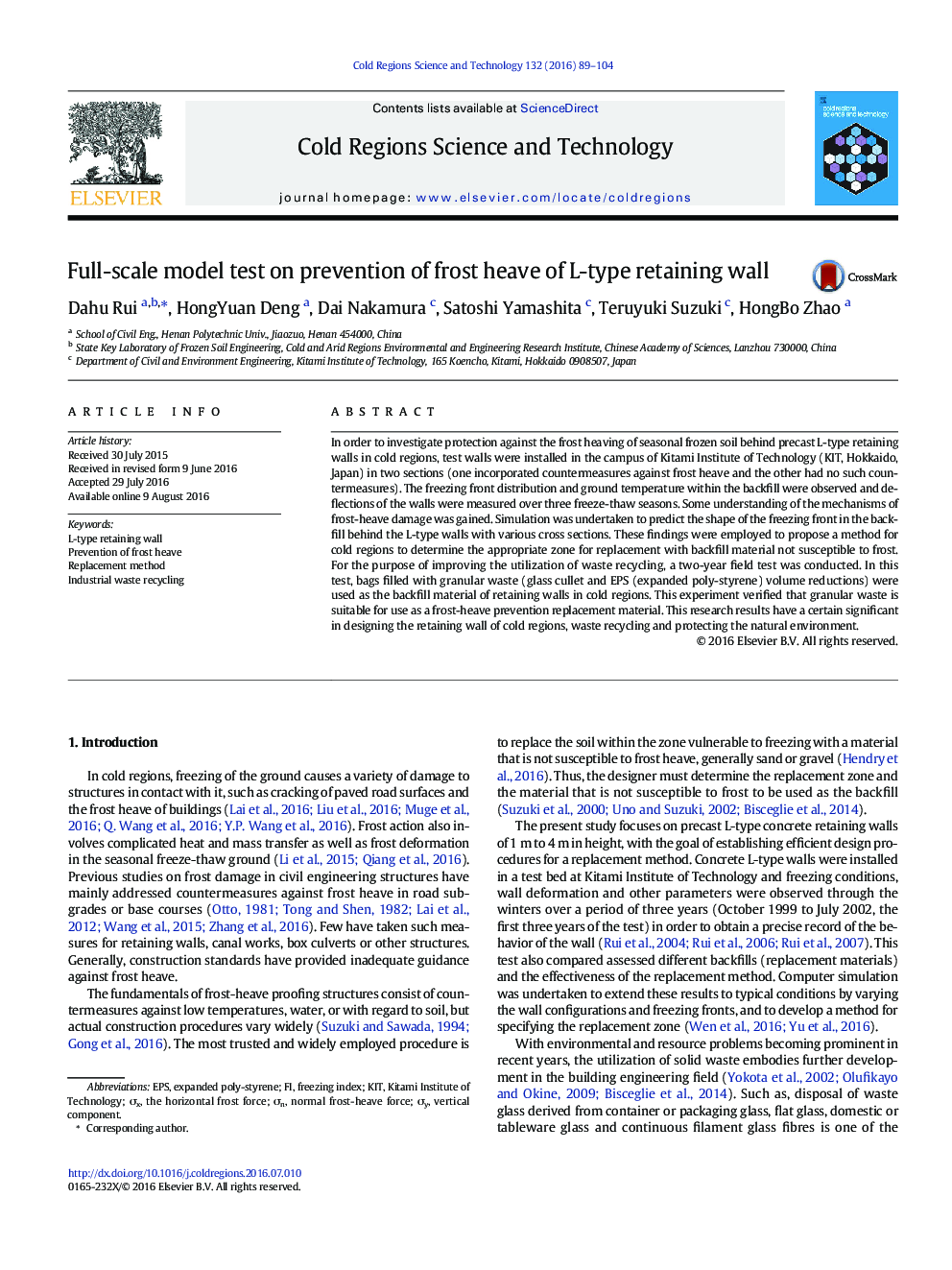| کد مقاله | کد نشریه | سال انتشار | مقاله انگلیسی | نسخه تمام متن |
|---|---|---|---|---|
| 4675607 | 1634432 | 2016 | 16 صفحه PDF | دانلود رایگان |

• Frost-heave mechanism is gained by freezing front distribution and behavior of walls.
• The effectiveness of the replacement method and the insulation method are verified.
• A method for determining effective replacement zone of backfill soils is proposed.
• The feasibility of granular material used as replacement material is verified.
• Horizontal component of frost heaving force acting on vertical wall is considered.
In order to investigate protection against the frost heaving of seasonal frozen soil behind precast L-type retaining walls in cold regions, test walls were installed in the campus of Kitami Institute of Technology (KIT, Hokkaido, Japan) in two sections (one incorporated countermeasures against frost heave and the other had no such countermeasures). The freezing front distribution and ground temperature within the backfill were observed and deflections of the walls were measured over three freeze-thaw seasons. Some understanding of the mechanisms of frost-heave damage was gained. Simulation was undertaken to predict the shape of the freezing front in the backfill behind the L-type walls with various cross sections. These findings were employed to propose a method for cold regions to determine the appropriate zone for replacement with backfill material not susceptible to frost. For the purpose of improving the utilization of waste recycling, a two-year field test was conducted. In this test, bags filled with granular waste (glass cullet and EPS (expanded poly-styrene) volume reductions) were used as the backfill material of retaining walls in cold regions. This experiment verified that granular waste is suitable for use as a frost-heave prevention replacement material. This research results have a certain significant in designing the retaining wall of cold regions, waste recycling and protecting the natural environment.
Journal: Cold Regions Science and Technology - Volume 132, December 2016, Pages 89–104